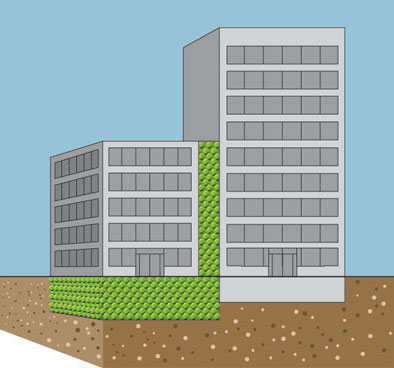We all know that natural disasters are sudden and dangerously powerful. There are many factors that make natural disasters a severe threat to the community worldwide. Even though professionals have learned methods for the anticipation of disasters like hurricanes, blizzards, or tornadoes, some natural disasters still strike without any warning. And one of the most dangerous is Earthquakes.
Even though there are unlimited measures like Seismic Mitigation and Earthquake proof structures are designed all over the world, the impact of this nature’s disaster haven’t been minimized. Whether it is a residential building, a commercial building, or an energy plant, the risks are unfathomable. That’s why; most industries take almost every measure in their books to prepare for such disasters.
Seismic Risks of Earthquake:
From crumbling walls to the collapsed roofs, there are countless things that are affected by earthquakes. However, there is a certain aspect of damage that is overlooked, i.e., piping system damage. The pressure piping systems and other MEP components are the ones that are more vulnerable to such natural disasters. Nowadays, the piping system is used to transport electricity, water, gas, and much more throughout the city. And this means there is a greater imminent risk of damage when the pipe support fails. Not only will it result in a devastating financial loss but also lead to production and distribution halt.
If you live in a part of the world where earthquakes are a widespread phenomenon, it is essential that you ensure the pipe support systems are ready for the challenge. This is very important for the industries as well as commercial or residential buildings. Here are some steps that you can take for seismic mitigation so that losses can be reduced during such events.
1: FEMA:
FEMA has created clear and concise guidebooks that allow a building engineer to choose and install a seismic restraint system. As the pipe support is often mounted on the top of the roof, the risks are higher for them as the strength of the seismic event is also greater on the rooftop. An adequately designed rooftop support system will protect the ductwork, conduit, pipelines, and other equipment located on the roof.
This further protects the structure under the pipe system. The guidebook provided by FEMA gives excellent guidelines for business owners so that they familiarize themselves with the basic roofing and pipe support design concepts.
2: Combine Strength with Flexibility:
When you are designing pipe support for seismic mitigation, it is not a “one-size fits all” technique. Both rigidity and functionality of the support system must be ideal so that it can deal with the worst seismic event.
3: Load Ratings:
As much as the right support matters, the right size of the support system also matters. There are various factors in the designing process of the material that makes it stronger or weaker than it looks.
For example, a narrow pipe clamp won’t be appropriate for a large diameter steel pipe. The support system for seismic mitigation must be able to distribute the weight uniformly and protect the roof membrane from tearing during the back & forth movements of the pipes. For instance, a pipeline and ductwork that is flexible and shift during changes in temperature pr building movement should not be connected using rigid support. This will lead to failure of the system as two forces work against each other, and inadvertently, the damage will be more than expected.
4: Ability to Deal with Harsh Environmental Condition:
The pipe support maintenance is one of the essential parts of building maintenance. Under the seismic mitigation guidelines, a support system that has shifted, corroded, or cracked must be replaced as quickly as possible as it is more likely to fail during a seismic event.
A routine inspection of the support hardware must be done to ensure that they can withstand such situations. Ignoring the proper conduct will lead to the failure of identification of damage or deterioration that might lead to major losses.
5: Combine Federal, Regional, and Local Guidelines Optimally:
While FEMA will provide you the basic guidelines to build earthquake-proof structures, it is still advised that you consult local or regional planning, designing, and installation expert. When you work with a professional Engineer, they ensure that the construction work is code-compliant, and the design is resilient to handle nature’s dreadful impact.
Why are Earthquake Resistant Structures necessary?
During earthquakes, the seismic vibration reverberates the surface, and it is the aftershock that results in significant damage. For every country, there is some kind of Seismic Mitigation provisions recommended in order to endure the radical movements and foundation shifts. The compliances help in minimizing the damage and protect the people inside a large structure. So, whether it is the pipe support system or the complete design of a structure, the failure to comply with the regulation will lead to disastrous consequences.
You need to consider five vital characteristics that influence the structural integrity of a building:
- Stiffness & Strength in both vertical and lateral directions
- Regularity of the movement so that the building moves equally without placing too much force on one side than another.
- Redundancy ensures that there are multiple strategies that prevent the building from falling over.
- Foundation, which is the most important characteristic of a large structure regardless of nature’s strike. The strong foundation will reassure that the building is powerful enough to resist the earthquake.
- Continuous Load Path that ties up structural and no-structural components of a building together so that the inertial forces can be dissipated.
We all know that earthquakes happen less frequently, but when they strike, they bring other seismic activity with them. That’s why; safety professionals always ensure that builders design earthquake-proof structures and develop a protective strategy that maintains structural integrity.
Luckily, C6xty solutions have designed a macro-architecture that promises to hold the building structure while the whole ground is shaking, thereby reducing the impact of the earthquake and offering a seismic mitigation technique.

